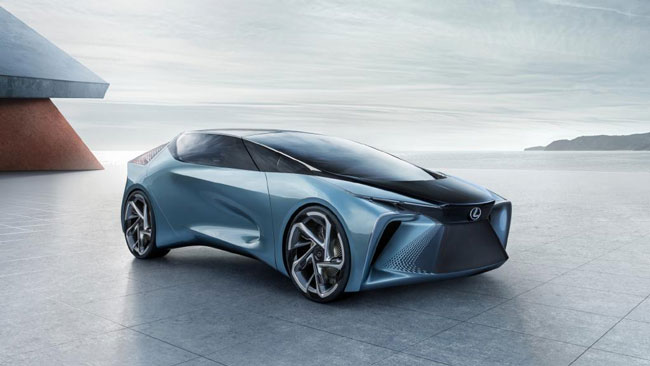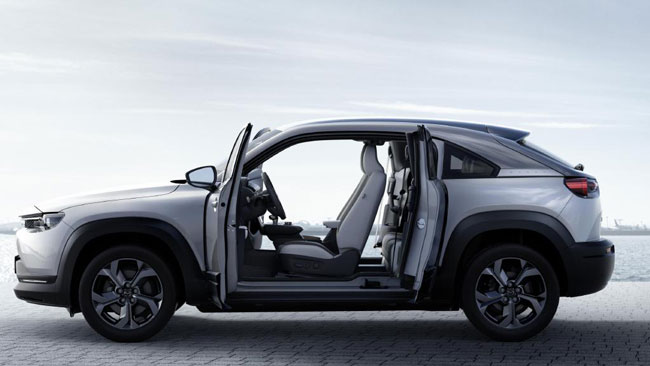The latest from the 2019 Tokyo motor show
The 2019 Tokyo Motor Show is well underway and as we’ve come to expect from the bi-annual event it was full of weird and wonderful concepts, technology and models that we may soon see on the streets.
Here are some of the more fascinating designs to be unveiled at the show so far.
LEXUS
Lexus took the opportunity at the Tokyo Motor Show to unveil a concept design of their first electric production vehicle, the LF-30.
In a sign that the luxury brand will become the next manufacturer to head down the electric vehicle (EV) path, the LF-30 concept comes exactly how you would imagine a car of the future would look, complete with a comically large front end and wing doors.
The LF-30 is capable of 0-100km/h in 3.8 seconds thanks to its 536 horsepower and 700 Nm of torque. The vehicle will have a top speed of 200km/h.
With a 500 km range, Lexus have developed wireless charging, meaning the LF-30 can be recharged without needing to be plugged in.
Motors are equipped to each of the four wheels to power them directly. Each of the wheels have been positioned using steer-by-wire technology to allow for maximum passenger space.
The vehicle was supposedly inspired by the relationship between a horse and its rider, representing the brand’s vision for a future generation of electric vehicles.

MAZDA
Mazda also took the opportunity to release plans for its first fully electric vehicle, the MX-30.
The introduction of the all-electric SUV also marks the debut of Mazda’s e-SkyActiv platform. Mazda plans to offer an e-SkyActiv (hybrid, plug-in hybrid or fully electric) version of each of its models by 2030.
While SUVs tend to stick to the traditional four-door model for convenience, Mazda have gone against the grain, implementing a rear ‘suicide’ door concept.
The door configuration is not the only unique element found in the new MX-30. Rather than using a tradition leather or fabric interior finish, Mazda has used cork, with a material made from recycled drink bottles used on for the seat lining.
The MX-30 also showcases a new technology system called ‘Motor Pedal’, which adjusts the rate of acceleration depending on the force applied to the accelerator pedal by the driver.
That’s about all we know of the Mazda MX-5 at this stage, with Mazda keeping details surrounding what we might find under the hood a secret for now.

MITSUBISHI
One of the more peculiar concepts to be announced at the Tokyo Motor Show was Mitsubishi’s all-electric off-road vehicle, the Mi-TECH.
With a unique, beach-buggy-esque design, the Mi-TECH has been created as a “small plug-in hybrid electric SUV that delivers unparalleled driving pleasure”.
The concept has been designed with the outdoorsy types in mind, with “excellent environmental performance and quietness”, bringing drivers closer to nature.
One way of bringing nature to the passenger has been to remove the roof and doors. Mitsubishi has gone for the free-flowing design common with Jeeps to add an extra level of adventure to the drive.
Another interesting feature is the hybrid powertrain blending a gas turbine with an electric motor to power the vehicle.
The turbine can be powered by diesel or kerosene and has been proposed as a cleaner alternative to the regular internal combustion engine.
Adding to the intrigue of this vehicle is the revelation that it will be able to perform spins on the spot by reversing a single wheel while the diagonally opposite wheel drives forward. This will give the vehicle better traction off-road, as the wheels with the best traction will receive additional power while spinning wheels will receive none.
Additional details are still slim, but lovers of off-road driving have reason to be optimistic.

SUZUKI
Suzuki have gone back to the future with their design of the Hanare autonomous micro-bus concept.
On the outside, the Hanare looks like a traditional camper van.
However, opening the large wing-door reveals a spacious room-like interior with a large interactive screen. Two lounge seats at either end of the interior serve as passenger seats as the fully autonomous vehicle drives itself.
With autonomous vehicles edging closer to reality, having the comfort of a living-room in your car could soon become the norm.

TOYOTA
Keeping on the theme of the car of the future, Toyota has released its LQ concept, a level 4 autonomous vehicle.
With a slick design featuring flush door handles, the LQ features an augmented reality head up display and headlights with a digital micromirror device, supposedly making it possible for drivers to project images and messages onto the road to communicate with other drivers.
It also comes with its very own AI agent, Yui. Yui means drivers will never have to travel alone again, helping the driver control car settings, playing music based on the current environment and providing real-time information on topics of interest.
The LQ comes with an electric drivetrain and a relatively low driving range of around 300km, however other specs beyond that are yet to be revealed.

HONDA
The Honda Fit (or Jazz as it goes by in Australia) has received a face-lift, with a much more compact, playful look making the model a little more modern.
Under the bonnet, a dual-motor hybrid set-up has been made available for the first time which will reportedly offer “EV-like” driving.
The new Fit will also be available in a new ‘Crosstar’ variant. With the Crosstar, drivers will have access to a higher ride height, 16-inch aluminium wheels, water-resistant upholstery, roof racks and a two-tone exterior.
Honda has stated that it is still too early to confirm details about what the vehicle will go by in Australia.
Original source: the Mercury | All the weird and wonderful cars from the 2019 Tokyo motor show (subscription required)
28 Oct 2019









